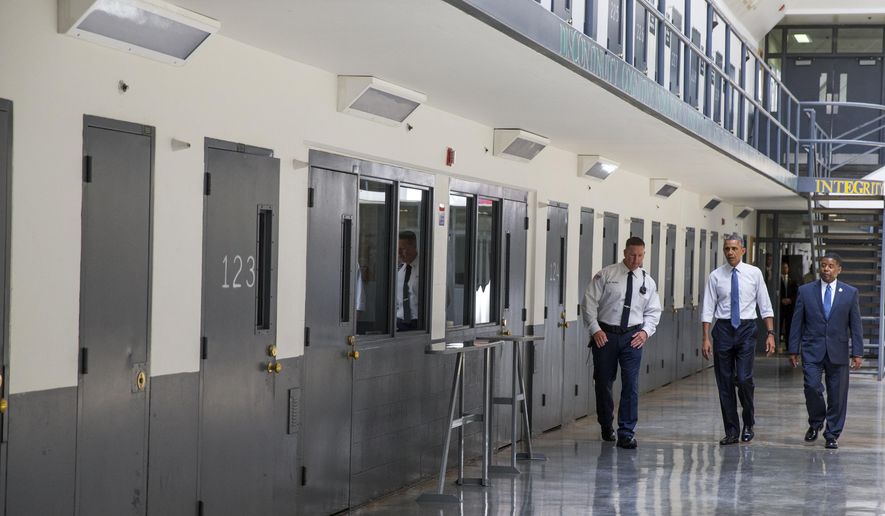A critical shortage of correctional officers plaguing the nation’s prison system is having a disparate effect on female inmates, a government watchdog said Tuesday.
The Justice Department’s inspector general, Michael E. Horowitz, concluded the dearth of trained prison employees is restricting the access of female prisoners to necessary care and services.
“The lack of sufficient staff is most noticeable at larger female institutions,” Mr. Horowitz wrote in a report.
After studying policies at a number of women’s prisons across the country, Mr. Horowitz said the Federal Bureau of Prisons must take additional steps to ensure female inmates access to trauma treatment or pregnancy programs.
For example, Bureau of Prisons policy requires that female prisoners can only be searched by female correctional officers. However, the Bureau of Prisons can’t ensure a female officer is available at each post where such searches are required, the report says.
The report also concluded that 90 percent of the female inmate population would benefit from trauma treatment, but staffing shortages make it nearly impossible to provide eligible inmates with the care they need, according to the report.
As the staffing shortage gets worse, the Federal Bureau of Prisons has been scrambling to fill correctional officer positions. Cooks, teachers and other civilian positions have had to perform guard duties because of a lack of correctional officers to meet the needs of a burgeoning prison population, according to recent media reports.
And the shortage could be higher than the estimated 7,100 open positions at federal prisons across the country. The Federal Bureau of Prisons has 37,237 civil positions and 19,073 correctional officers. However, the Trump administration could reduce those numbers as part of its 2019 budget proposal.
Under President Trump’s plan, the number of civilian and correctional officer positions would fall to 36,909 and 18,674, respectively.
Kara Gotsch, director of Strategic Initiatives at the Sentencing Project, said she was “not shocked” by the inspector general’s findings.
“There is a staffing shortage system-wide,” she said. “But staff shortages are more complicated with women prisoners because it’s compounded when you have male correctional officers in positions where women are required to do the strip searches.”
The inspector general recommended the Bureau of Prisons improve the allocation of staff across the country’s correctional facilities and ensure that all staffers have received proper training.
In a response attached to the report, Hugh Hurwitz, acting director for the Federal Bureau of Prisons, said he agrees with the inspector general’s recommendations and vowed to improve both staffing and training.
“The BOP will determine the appropriate level of staffing that should be allocated to the Women and Special Populations Branch, based on an analysis of its broad mission and responsibilities,” Mr. Hurwitz wrote.
Ms. Gotsch said the best solution to the issue is sentencing reform to reduce the number of women incarcerated for low-level offenses.
“We are putting too many women in prison for low-level offenses for too long,” she said. “There is never enough money in the federal budget to adequately care for prisoners if we have significant overcrowding and maintain these high levels of incarceration.”
• Jeff Mordock can be reached at jmordock@washingtontimes.com.




Please read our comment policy before commenting.